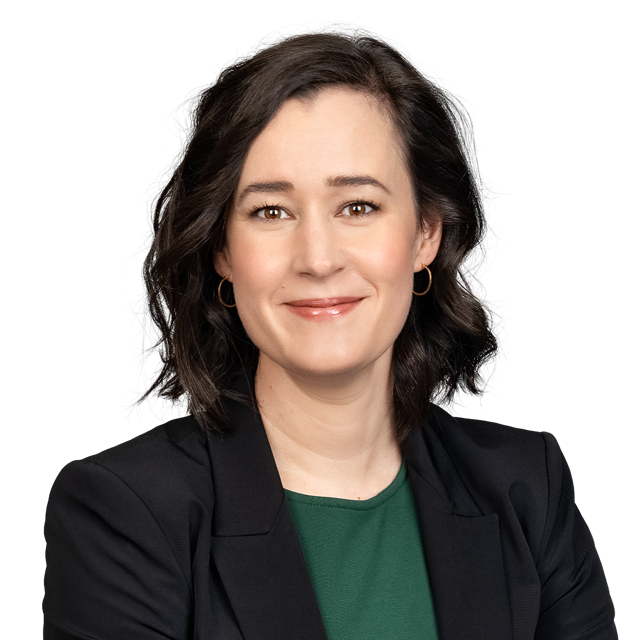Please note this blog post was last updated on June 12, 2020.
The application portal for the Canada Emergency Wage Subsidy (CEWS), which pays employers impacted by the COVID-19 pandemic up to 75 percent of an eligible employee's remuneration for 12 weeks (to a maximum of $847 per week), retroactive from March 15 to June 6, 2020 (which period may be extended), opened on Monday, April 27, 2020. Media reports indicate that nearly 30,000 applications were made on the first day, with an aggregate of one million applications expected. The operation of the CEWS and the eligibility requirements are described in our previous blogs, COVID-19 Relief for Employers: The Canada Emergency Wage Subsidy is Approved and Applications for the Canada Emergency Wage Subsidy Open on April 27, 2020.
The Canada Revenue Agency (CRA) has indicated that it will be publishing a list of all employers that have applied for the subsidy, such public listing being partially motivated as a way to dissuade fraudulent claims. The government has repeatedly cautioned that the subsidy requires "good faith and trust between everyone involved" and that large penalties may apply where employers receiving the CEWS are ultimately found not to be eligible. For some employers, penalties may not be a concern—their eligibility for the CEWS is clear, but, for others, their unique circumstances make their eligibility for, and the scope of, the CEWS somewhat uncertain and the risk of penalties becomes a significant concern. The purpose of this blog post is to describe the consequences to employers who receive the CEWS but are ultimately found not to be eligible for all or a portion of the subsidy received. It is our hope that the summary below will provide some comfort to those employers faced with concerns as to their entitlement for the CEWS and help determine a path forward.
Background: Uncertainties Abound
The CRA has indicated that it will be implementing both pre- and post-payment verification work for the CEWS. The CRA has issued an application guide, various FAQs and further guidance is anticipated both through CRA pronouncements and potential regulations. Notwithstanding these publications, there remain many areas of uncertainty, which is perhaps not surprising given how quickly the legislation was rolled out and its complexity.
Of particular note, a key requirement of eligibility for the CEWS is that the employer experience a decline in "qualifying revenue" for March 2020 of at least 15 percent (as compared to the reference period of March 2019 or average of January and February 2020) and for April or May 2020 of at least 30 percent (as compared to the reference period of April or May 2019 or average of January and February 2020). For many employers, the calculation of revenue for this purpose is far from straight-forward. Open issues include what items should be excluded as "extraordinary items"; the treatment of items typically included in "gross revenue" for tax purposes but not typically included in computing revenue under "normal accounting standards"; the treatment of dividends, interest and other investment income; calculation issues in consolidated groups, and more. Uncertainties can also arise in determining what, if any, portions of an employee's remuneration are to be included or excluded from the CEWS calculation. In some circumstances, it is also difficult to confirm, prior to the receipt of the CEWS, that none of the particular anti-avoidance rules in the legislation apply.
Over time, many of the remaining issues will be clarified. But, until then, some employers face a difficult choice—should they apply for the CEWS in circumstances where their entitlement may not be 100% clear or should they wait for further clarifying guidance and delay their receipt of funds crucial to maintaining their business operations and keeping their employees employed. Given the significance of the CEWS and the impact on an employer's business, we expect that many employers will want to make their applications sooner rather than later but making an educated decision in this matter requires an understanding of the potential penalties.
Consequences of Errors
Employers are required to keep records demonstrating their eligibility for the CEWS, including the reduction in qualifying revenue and the computation of eligible remuneration amounts. The CRA has indicated that it will use a combination of automated queries and validation within its data, follow-up phone calls to verify certain elements of the claim when necessary, and more comprehensive post-payment reviews or audits of employers who receive the subsidy. Where an employer is ultimately found to be ineligible, several potential consequences result.
Repayment of Subsidy and Interest
The CEWS will be distributed through a deeming rule in the Income Tax Act (ITA) which deems an employer that qualifies to have made an "overpayment" of the employer's liability for tax. This overpayment is deemed to arise in the applicable qualifying period (i.e., March 15 to April 11, 2020, April 12 to May 9, 2020, or May 10 to June 6, 2020). The Minister is then to assess the employer and the deemed overpayment is "refunded" to the employer. Where the employer is ultimately found to be ineligible for all or a portion of the subsidy, the employer would be assessed for the amounts owing pursuant to the regular administrative provisions in the ITA, with the result that the deemed overpayment would not arise, such that the employer will be required to repay any portion of the subsidy to which they were not entitled.
In addition to the repayment of any portion of the CEWS to which the employer is not entitled, the scheme of the ITA indicates that interest should also be payable on the amount that needs to be repaid. Accordingly, under the current rules, where the Minister determines that an amount was refunded to a taxpayer beyond the amount to which the taxpayer was entitled, the excess is deemed to be an amount payable by the taxpayer on the day it is received, with interest accruing at the prescribed rate as of that date. As such, interest accrues from the date when the CEWS is originally paid until the amount that the employer owes is fully paid back to the Minister.
Note that there is no due diligence defence for either the obligation to repay the CEWS or the obligation to pay interest. Thus, employers who apply for the CEWS in the face of uncertainty in their positions must, at a minimum, be aware of the risk of that they will need to repay the subsidy and interest thereon.
Monetary and Criminal Penalties for False Statements
The government's publications on the CEWS have contained strong warnings against any false statements. For example, as part of the CEWS application, the individual who has the principal responsibility for the financial activities of the employer must attest that the application is complete and accurate in all material respects by completing an Attestation. The Attestation includes an acknowledgement that "making a false attestation is a criminal offence, and that the CEWS program rules and other rules under the Income Tax Act contain serious penalties and consequences for intentional or grossly negligence false statements and other misconduct." Importantly, interest accrues on the various penalty amounts discussed below.
Civil Liability
As a part of the ITA, the CEWS regime incorporates the ITA's penalty regime applicable to fraudulent claims or false statements, which applies in addition to the obligation to repay the CEWS. In particular, if any person knowingly, or under circumstances amounting to gross negligence, makes, or participates in the making of, a false statement or omission in its CEWS application, that person is liable to a penalty equal to the greater of $100 and 50 percent of the difference between the amount of the CEWS claimed in the application and the amount of the CEWS to which the employer is actually entitled.
To impose such penalty, the CRA must show that the CEWS application contained one or more incorrect statement that were made either:
- knowingly—this requires that the person making the statements had actual knowledge or ought to have known that the facts disclosed in the CEWS application were incorrect; or
- under circumstances amounting to gross negligence—this involves conduct involving either deliberate wrongdoing or a marked departure from the standard by which a reasonably careful person would prepare the CEWS application. Gross negligence has been described as a "high degree of negligence tantamount to intentional acting, an indifference as to whether the law is complied with or not."
The burden of proof lies with the CRA to show that the factual circumstances are such that the gross negligence penalties are justified. Caselaw on the application of the ITA gross negligence penalties in the context of other tax rules indicates that such penalties should be difficult to apply where the person making the CEWS application sought professional assistance in completing the application and disclosed all amounts in issue on the application. For this reason, where any material uncertainty exists with respect to the eligibility of an employer to the CEWS, employers should seek professional advice in ensuring that they have completed the appropriate due diligence and are not knowingly making a false statement.
Criminal Liability
In addition to the above civil penalty for false statements, the ITA also contains a criminal penalty regime for false statements. Under this regime, every person who obtains a refund under the ITA (which would include receipt of the CEWS) which is greater than the amount to which the person is entitled by making, or participating in the making of, a false or deceptive statement, is guilty of an offence. In addition to any other penalty provided, such person is liable: (i) on summary conviction, to a fine of between 50 percent and 200 percent of the amount of the refund claimed but not entitled to or both the fine and imprisonment for a term not exceeding two years, or (ii) if convicted on indictment, to a fine of between 100 percent and 200 percent of the amount of the excess refund and imprisonment for a term not exceeding five years.
As true criminal offences, the onus is on the CRA to prove that the false statements were made knowingly and with the requisite mental intent to obtain the CEWS in excess of the employer's actual entitlement. Although the government's publications have referred several times to this maximum imprisonment of five years, the imposition of these criminal penalties would presumably only be made in clear cases of tax evasion. As above, where an employer has sought professional advice and has made a bona fide effort to calculate its CEWS entitlements and disclose all pertinent information on its CEWS application, such criminal liability should not apply.
Director Liability for Employers that are Corporations
Under the ITA, an officer, director or agent of a corporation who directs, authorizes, assents to, acquiesces in, or participates in the commission of an offence by the corporation is a party to, and guilty of, the same offence. That officer, director or agent, as the case may be, will be liable to the same punishment provided for the offence, whether or not the corporation has been prosecuted or convicted for it. Accordingly, where an employer that is a corporation commits the criminal offence of making false statements as described above, directors or officers of that corporation may also face liability for the fines and imprisonment described above. This may be of particular import to the person who bears responsibility for the attestation made as part of the CEWS application. Thus, officers who make such attestation, and the directors who approve the attestation, should carefully review to ensure that no false statements have been knowingly made or without the proper due diligence.
Monetary Penalty for Artificial Transactions
The CEWS regime also includes a specific anti-avoidance rule, and additional penalties, where:
- the employer (or a person or partnership that does not deal at arm's-length with the employer) enters into a transaction or participates in an event (or a series of transactions or events) or takes an action (or fails to take an action) that has the effect of reducing its qualifying revenues for the particular period (subject to explicitly enumerated exceptions); and
- it is reasonable to conclude that one of the main purposes of the transaction, event, series or action is to cause the employer to qualify for the subsidy.
Where this anti-avoidance rule applies, in addition to the obligation to repay the CEWS, the employer will be liable to a penalty equal to 25 percent of the amount of CEWS it claimed.
Caselaw on similar purpose tests in other provisions of the ITA indicates that, in determining "purpose", the courts should look beyond the subjective intentions of the employer undertaking the impugned action and should look to objective manifestations of purpose. Courts have also rejected the argument that a taxpayer can have only one "main" purpose, holding that any significant purpose is a main purpose. Applying those principles to the CEWS anti-avoidance rule, where qualification for the CEWS is a substantial purpose driving the decision to enter into a transaction or take an action that reduces revenue, that purpose may well be a "main" purpose. On the other hand, some courts have held that, where transactions that are entered into for a "genuine commercial purpose" and are not deliberately structured in such a way as to obtain a tax advantage, the tax advantage should not be regarded as a main purpose of the transaction. That said, in the context of different provisions of the ITA, courts have held that, where a transaction results in a tax benefit (here, qualification for the CEWS), the CRA may reasonably infer that a purpose of the transaction is to obtain that benefit.
The key takeaway here is that employers should exercise extreme caution in undertaking any measures to intentionally reduce qualifying revenues, even if those measures also have genuine commercial purposes. If employers are undertaking any out-of-the-ordinary actions, or failing to take ordinary actions, which have the effect of reducing qualifying revenues, it will be incumbent on the employer to offer an objectively reasonable and persuasive explanation that establishes that none of the purposes of such action or inaction was to enable the employer to qualify for the CEWS.
Third-Party Civil Penalties
The penalties described above apply to employer receiving the CEWS and, in some cases, to its directors and officers. In addition to these penalties, the ITA also contains provisions for civil penalties on third parties who make or furnish, participate in the making of or cause another person to make or furnish a statement that the person knows, or would reasonably be expected to know but for circumstances amounting to culpable conduct, to be false. These are generally categorized as a “planner penalty” and a “preparer penalty”, with the primary difference being that the “preparer penalty” can apply where the false statement could be used on behalf of the taxpayer by someone else (as opposed to only directly by the taxpayer). The penalties therefore apply fairly broadly.
The “planner penalty” is the greater of $1,000 and the third-party planner’s “gross entitlements” (i.e., amounts that the third-party planner, or a person not dealing with them at arm’s length, is entitled to receive in respect of the activity) when the false statement is made in the course of a tax planning activity or valuation. In any other case, the “planner penalty” will be $1,000. The “preparer penalty” is the greater of $1,000 and 50 percent of the taxes saved by the taxpayer by making the false statement (up to a maximum amount of the total of $100,000 and the third party person's “gross compensation”, i.e., amounts that the third-party preparer, or a person not dealing with them at arm’s length, is entitled to receive in respect of the activity).
Accordingly, if a third party files or prepares the CEWS subsidy application on behalf of an employer, such third party could be subject to a third-party penalty under the ITA, if such third party knew or would reasonably be expected to know, that the application contained false statements. For this purpose, a false statement includes a statement that is misleading because of an omission from the statement. The burden of proof lies with the CRA to show that the factual circumstances are such that the penalties are justified. In addition, the ITA contains a good faith defence, pursuant to which the advisor will not be subject to a penalty if the advisor acted in good faith on the information provided by the employer. There are a number of factors that could affect whether this good faith defence is available in any particular circumstance. Importantly, such penalties do not generally apply to employees.
Conclusion
Our expectation is that the CEWS will be administered in a purposive fashion—i.e., in a manner that provides support to employers with the goal of ensuring that workers continue to receive employment remuneration during the COVID-19 pandemic and in a manner that place employers in the position of having a strong workforce from which to continue their businesses following the pandemic.
In line with such expectation and with the caselaw on the ITA penalty provisions, penalties should not be imposed in cases where an excessive CEWS claim arises from an employer's reasonable position that is subsequently successfully challenged by the CRA. In other words, where an excessive CEWS claim arises due to a bona fide position taken in relation to an issue on which there is uncertainty, we would expect that the consequence of a claim made in error should be limited to a repayment of the CEWS and interest thereon, without the imposition of penalties. It will be important, however, that employers not take positions which are obviously unreasonable or are contrary to well established caselaw principles and that the CEWS application not contain any false or misleading statements. In areas where clarity is lacking, professional assistance should be sought.
The information in this blog is current to April 27, 2020. As of the date of writing, various reports indicate that the government is also considering additional penalties to address situations where CEWS funds are misused (e.g., not used to pay employees).
For employers looking to structure their business affairs in ways that will best allow them to utilize the assistance available through the CEWS and/or other programs, there is no one-size-fits-all approach. The Bennett Jones Tax, Employment Services, and Public Policy groups continue to work with employers, government and other national and local organizations to work through these issues, and would be pleased to assist you as you look to identify and implement strategies in connection with the COVID-19 pandemic.
In addition, please visit our COVID-19 Resource Centre for other COVID-19-related materials.


















